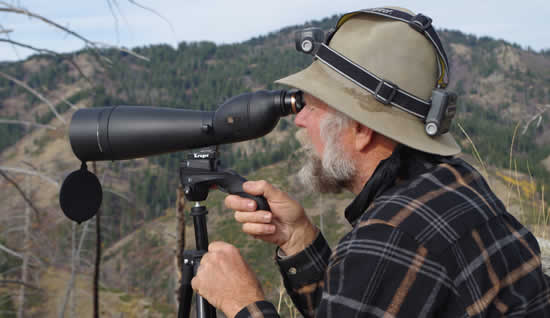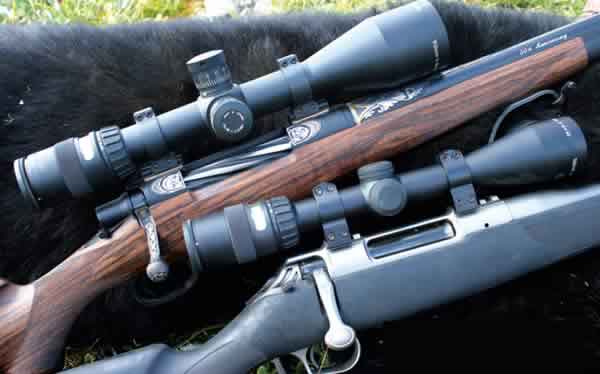
Handgun Optics
With positives and negatives, deciding if a red dot sight is right for you boils down to your handgun’s mission.
Story and Photos by Nick PernaSo, in the form of a disclaimer, I am old. Fifty-one years old, to be exact. As a soldier and a cop, I’ve been making a living with a gun for nearly my entire adult life. I can say, with some degree of distinction, that I have carried just about every variety of AR/M-16 that has ever been used by the US military: M-16A1, M-16A2, M203, M4 and the AR-15 patrol rifle.
With age comes a certain amount of suspicion whenever a new product enters the market claiming to be able to do everything. As a point of reference, I have seen VCR tapes, Beta tapes, records, 8-tracks, cassette tapes, laser discs, compact discs, floppy discs and others come and go. I’ve learned to adopt a “wait and see” attitude whenever a new product presents itself.
In the firearms and tactics realm, I, despite my age, retain a relatively high degree of relevancy when it comes to the carry, use and operation of firearms. I’m a cop, a law enforcement firearms instructor, constant carrier of firearms while off duty, as well as a hunter. So I don’t base my opinions only on what I used to do. I base them on what I and others are using currently and what I think will work in the future.

In some cases, guns come with an already attached RDS. No longer does a person desiring an RMR need to send their handgun in for extensive modification.
Red dot optics on rifles have been the norm for at least the past 15 years, their mainstream acceptance brought on, in part, by successful applications in combat during the War on Terror. On the sporting front, especially during three-gun competitions, they are essential. Iron sights on rifles have been relegated to backup status, only to be used if an optic fails.
So, naturally, red dot applications should automatically extend to handguns as well, right? Well, yes and no. With every advantage generally comes a disadvantage, so it is important for the end user to weigh the pros and cons before making a tactical equipment decision.
The pros of RDSs are obvious. A well-trained shooter with a red dot sight, on any weapons platform, is generally going to be able to get off quicker, more accurate shots than a weapon with a sighting system that requires lining up two different elements (front sight and rear sight). This is especially true at longer distances with handguns, when “front sight focus” (using only your front sight to engage a target) doesn’t work as well. Red dot sights work the same close up and at acceptable distances. Put the red (or green) dot on the target or threat, and shoot.
BUT THERE ARE cons as well. Training: Switching from traditional sights to red dots requires training. The first time I shot a handgun equipped with an RDS, I found it was different and I was not getting the shot placement I expected. With a little bit of practice, I was able to get good, consistent groups. Learning to quickly acquire the red dot and focusing on the target is the goal.
One bad habit I have observed with RDS users is checking their optic to make sure it’s on before an engagement. In a recent training exercise at work, we had officers engaging threat targets starting with their handgun in the holster. As a precursor to the engagement, officers are given the opportunity to check their weapon to ensure it is loaded by press checking it. With the officers who used RMRs, they all drew the weapon up to eye-level to ensure the red dot was on. In one instance an officer checked his RMR but didn’t make sure his handgun was loaded. He got a click instead of a bang when the target presented itself. These types of issues need to be addressed.
Mechanical failures: All machines can potentially fail at any time. For RDSs, this can mean a dead battery (although this is rare since most sights have extremely long battery lives) or the electronics can malfunction. RDS systems are usually backed up by iron sights so a battery/electronics malfunction doesn’t deadline the weapon. However, a brain trained to RDS shooting will have to adjust to using iron sights. Iron sights aren’t immune to breakage either but there are less things that can go wrong with them.
Cost: This is probably one of the biggest issues. RDSs can run from several hundred to several thousand dollars. The handgun either needs to be milled out by a gunsmith, a separate slide needs to be purchased that will accept RMRs, or an entirely new handgun needs to be purchased. Then there are the periphery purchases like holsters. For cops this can get expensive, as they need to purchase work holsters as well as concealed carry rigs.
PROBABLY THE MOST important factor in deciding if an RDS is right for you is the mission your handgun is supposed to fulfill. For example, if you intend to mount one on your personal, concealed carry defense weapon, an RDS is probably a good option. In a rapidly developing situation where your life depends on speed and accuracy, the RDS can be a life-saver. There are drawbacks to consider, such as an RDS-equipped gun being slightly less concealable, but overall it’s probably the way to go.
Now consider that your primary weapon is a rifle, and you carry a handgun as a backup weapon. Maybe having an EMP (electromagnetic pulse) proof sighting system is the best option. One that doesn’t rely on batteries or electronics. It’s a backup, after all, designed to fill in for the primary weapon when it fails or runs out of ammo. So embrace the change, as it can make you a better operator, but always be aware of the limitations.





